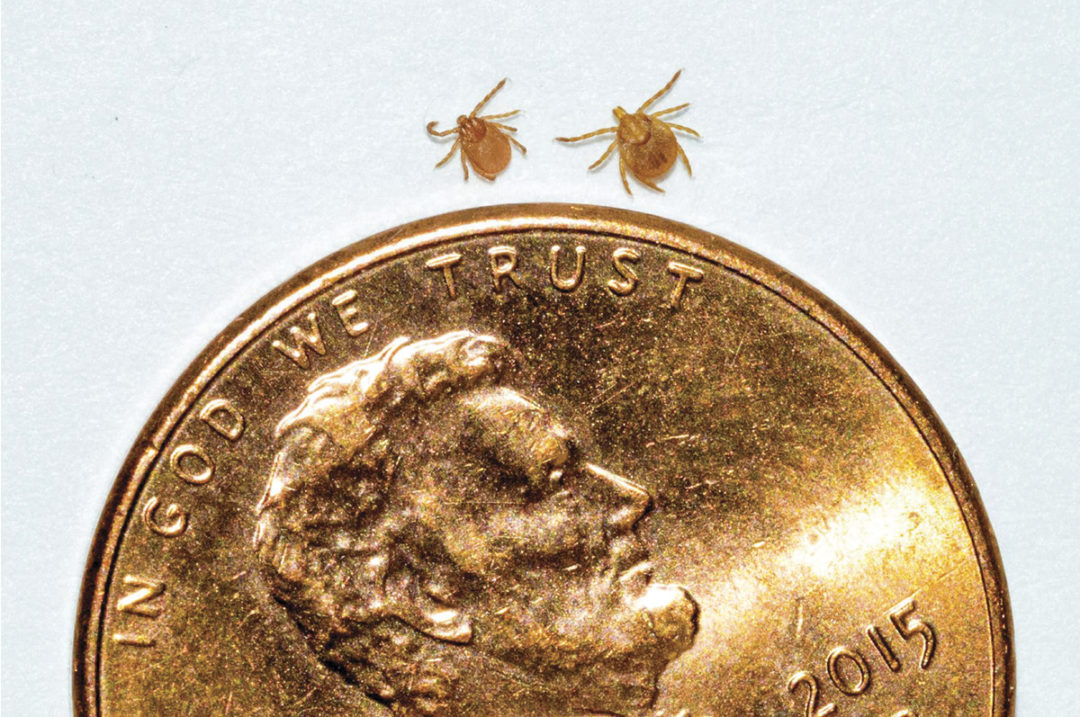There’s a new tick in town, and it’s made its way to 17 different states – ranging from the South all the way up through the East Coast.
During the Cattlemen’s College portion of the 2023 National Cattlemen’s Beef Association’s (NCBA) annual convention, Michael Yabsley, a professor of wildlife disease at the University of Georgia’s College of Veterinary Medicine; and Sierra Guynn, a clinical professor with Virginia-Maryland’s College of Veterinary Medicine, discussed the emergence of the Asian longhorned tick in the U.S. and the problems it could cause for cattle producers.
Normally present in East Asia, the Asian longhorned tick is an invasive pest first found in the U.S. in 2017 in sheep. Only the size of the tip of a pen, the tick has also become established in Australia, New Zealand and a few other countries along the Pacific Rim.
“A really weird thing about these ticks is that they can reproduce parthenogenetically,” Yabsley said, explaining that most ticks need a male and a female to reproduce and establish a new population. “With the Asian longhorned tick, however, you just need a female, and she can produce the eggs all on her own. You just need one tick to be introduced, and then they can establish a new population.”
The Asian longhorned tick carries pathogens such as Theileria orientalis Ikeda, which causes a disease (infectious bovine anemia) similar to anaplasmosis in its clinical signs, Guynn said. Persistent infection, failure to grow (ill-thrift) and reproductive problems can all be associated with theileria, and in extreme cases, severe stress, blood loss and death.
 Ticks are often found in tall pastures where long grass provides them protection. Photo by Michael Yabsley.
Ticks are often found in tall pastures where long grass provides them protection. Photo by Michael Yabsley.
What can you do?
While there is no approved effective treatment in the U.S., Yabsley offered a few options for producers in affected states. “It’s probably not going to solve the problem, but it will help with control,” he said.
Treatment of animals
- Spray or dips (e.g., permethrin pour-ons/sprays, coumaphos, zeta-cypermethrin, tetrachlorvinphos, ivermectin, amitraz)
- Injectable drugs (e.g., doramection) has been used for cattle fever ticks in Texas
- Eartags and dust and back rubbers have not been evaluated for this tick but can probably provide some control based on their use for other tick species
Yabsley said that it is important for producers to consult with their veterinarian on treatments. There are several products that have been used for ticks quite successfully, he noted, but there are specific rules for their use depending on the cattle status (e.g., beef, dairy, organic, etc.).
Environmental modification
- Mow grass short; having long grass provides them protection.
- Limit access to wooded, bushy or high-grass areas (move fencelines 10 feet from edge of woods).
- Remove brush and woody debris where wildlife may live.
Environmental treatment
- Carbaryl has been used in several states for control but, importantly, there is restricted use on pastures with weeds in bloom to protect bees.
- Some lambda-cyhalothrin products can also be used (i.e., labeled) currently for grazing lands (with withdrawal times).
For those in confirmed states, Guynn recommended having extension personnel out to check for ticks, or at minimum, producers doing a thorough check themselves. She said, “It doesn’t even take extension coming out, but it does take you sending those ticks to a lab to verify they are Asian longhorned ticks, because maybe you have another tick problem.”
In addition, producers buying cattle where Asian longhorned ticks are present should consider testing purchased animals for theileria. Guynn said, “If the tick is in your state, it’s a possibility that it’s on your cattle.”
To see if Asian longhorned ticks are in your state, click here. The University of Georgia updates this website weekly with new data and monthly with data from the USDA Situation Report. The USDA also has an online story map of this invasive tick here.









